Black hillsand Western (Crouch Line), South Dakota
Rapid City to Big Bend
Steven Dutch, Professor Emeritus, Natural and Applied Sciences, Universityof Wisconsin - Green Bay
If there's a more bizarre place to put a railroad, much less a railroad that once had ambitions of reaching the Pacific, than the valley of Rapid Creek, South Dakota, I'm hard pressed to imagine what it could be. The Black hillsand Western Railroad went through a series of names, and was often called the "Crouch Line" after its founder,
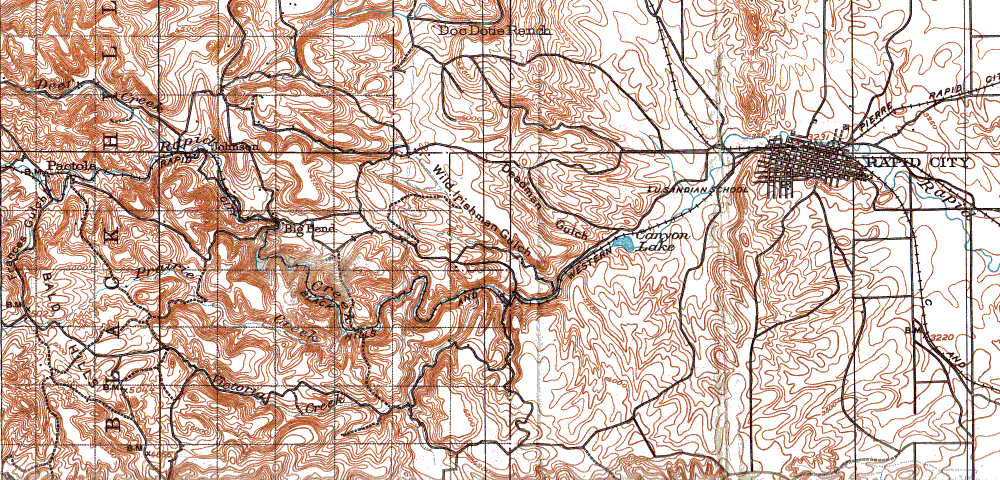
The figure above is scanned from an 1898 1:125,000 topographic map. The railroad starts at Rapid City on the far right, travels a fairly simple route past Canyon Lake (closely paralleled by present State Route 44), snakes up Rapid Canyon through Big Bend and Johnson (now called Johnson Siding) and thence to Pactola (now under a reservoir). It continued on past Pactola to Mystic in the central Black hills. The stretch beyond Pactola Reservoir is now a hiking trail.
Strange as it sounds, there were a fair number of railroads running along canyons in the eastern Black hills, though most were short lived. The most common cause of financial failure was flash flooding. The "Crouch Line" was the longest lived, running into the late 1940's. However, it had a well deserved reputation for being odd. It was called "the crookedest line in the world," it was said that the engineer could shake hands with the brakeman in the caboose at times, and it was claimed that the railroad crossed Rapid Creek over 100 times. In some places turns were so tight that the rails were specially curved before being laid.
Think about it. There are no paved roads. Automobiles are primitive and slow. You want to move large amounts of people, supplies, mining equipment, and timber in and out of the hills. How do you do it? Build a road and use horses or oxen? Painfully slow and not enough capacity. Put that many wagons on a road and you'll spend all your time and money repairing the road. If you're going to build a road good enough to handle heavy, high volume traffic, you might just as well build a railroad, which is more durable in everyday use, has a lot of capacity, and is much faster.
Between later road construction and floods, especially the infamous 1972 disaster, little of the railroad remains. It can be hard to tell whether apparent remnants of grade are the railroad grade itself, other old roads, or some other construction. The most obvious relics of the railroad are bedrock cuts.
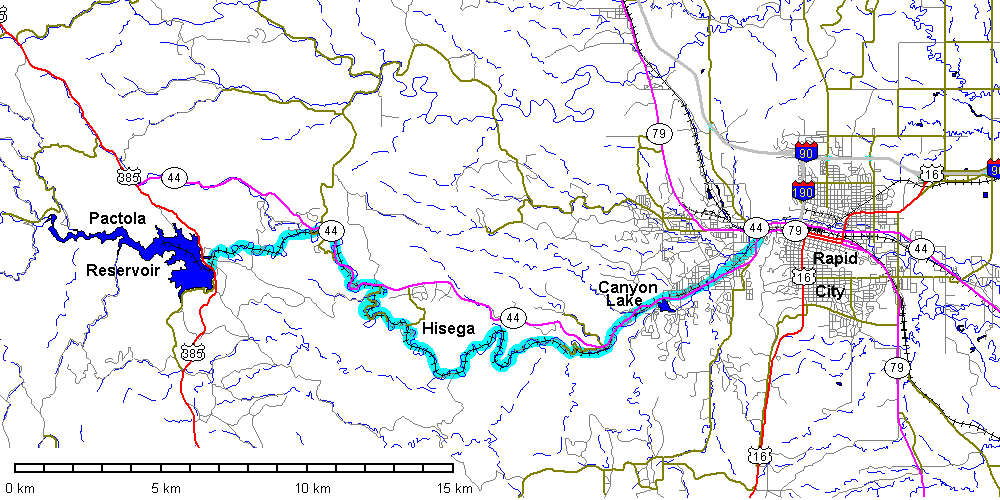
The map above shows the Crouch Line digitized onto present geography. The Crouch Line is emphasized with light blue.
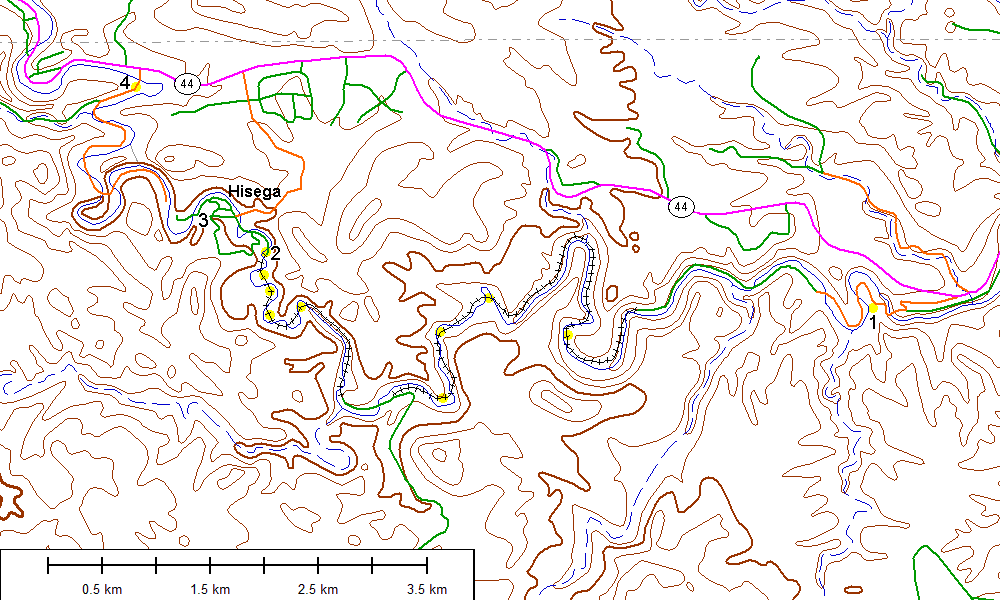
The map above shows the line from the mouth of Rapid Creek Canyon (Dark Canyon) to Big Bend. Localities described below are numbered. Locations of cuts as seen on Google Earth are also shown as yellow dots. Most of the easy access to the route is blocked by private property.
The railroad is shown as such, even though it no longer exists. Portions that coincide with existing roads are not shown.
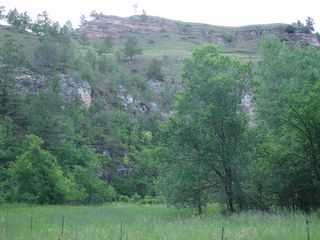 |
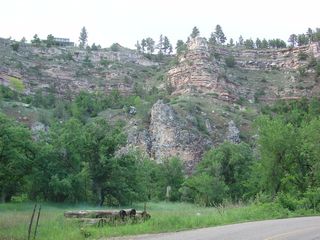 |
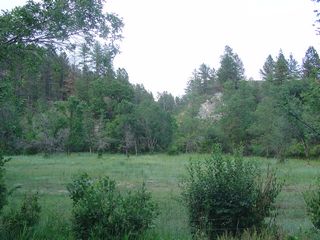 |
Locality 1 Above: near the mouth of Rapid (Dark) Canyon Left and below: a couple of cuts through rock spurs near the mouth of the canyon mark the former course of the railroad. |
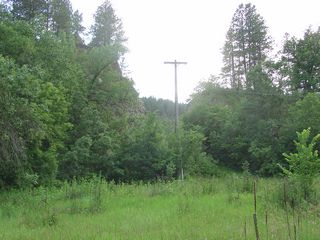 |
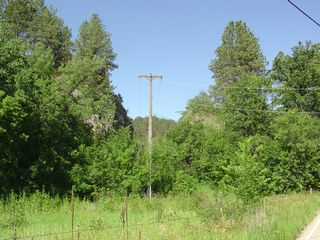 |
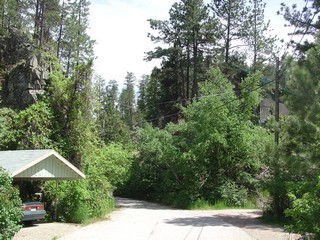 |
Locality 2, Left: this deep cut at Hisega seems lavish for a mere
driveway and is an old railroad cut. Locality 3, Below: a little west of Hisega, this flat terrace in the hillside seems not to be a former home site or abandoned road, and may be a remnant of the railroad grade. |
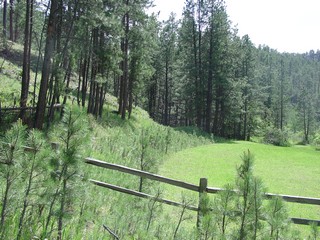 |
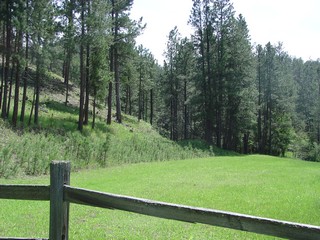 |
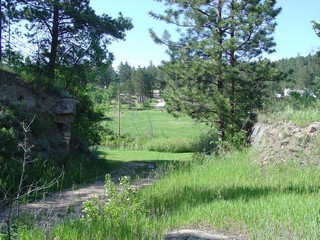 |
Locality 4, Left: this notch near Big Bend is another relic of the railroad. It is probably the easiest to examine and most unambiguous in a photograph. |
Return to Historic Sites Index
Return to Virtual FieldTrips Index
Return to Professor Dutch's Home Page
Created 25 April 2007, Last Update 06 June 2020